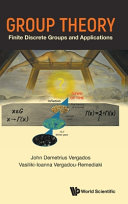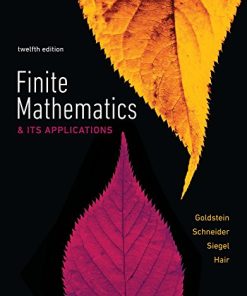Group Theory Finite Discrete Groups and Applications John Demetrius Vergados
$50.00 Original price was: $50.00.$25.00Current price is: $25.00.
Group Theory Finite Discrete Groups and Applications John Demetrius Vergados – Ebook Instant Download/Delivery ISBN(s): 9789811274756,9811274754, 9789811274770, 9811274770

Product details:
- ISBN 10: 9811274770
- ISBN 13: 9789811274770
- Author: John Demetrius Vergados
This book deals with the role played by symmetry in the understanding of the physical world, beginning with the notion of geometric symmetries of the ancient Greek philosophers and mathematicians. The recognition of the existence of symmetries led to the notion of transformations, which led from one state of the system to another. It was then realized that such transformations, under the operation of multiplication, constitute an interesting set, whose study led to the branch of mathematics known as Group Theory. With the emergence of quantum mechanics, this theory became much more interesting and led to some additional applications. The theory got another boost with the need for of the internal degrees of freedom in describing physical systems. This way the notion of symmetry is no longer purely geometric and evolved into a useful tool in the study of all physical sciences.
For practical reasons as well as pedagogical reasons, group theory is usually split into two parts. The first deals with discrete groups, with the group elements being countable, usually finite in number, while the second deals with continuous groups, whose elements depend on continuous parameters. This volumefocuses the discussion on discrete groups.
Given that group theory should be presented from a unified perspective, involving not only the mathematical rigor and beauty of symmetries, but also the ability to use it as a tool for applications, either currently popular or expected to become so in the future, this approach will surely be more beneficial to the dedicated reader. It is not intended for those who would like to just look up a formula or use the results of a table, without understanding their derivation.
Table contents:
1. The Role of Symmetries in Physics — A Prelude
2. Introduction to Discrete Groups
3. Discrete Groups — Basic Theorems
4. Elements of Representation Theory
5. Representation Reduction — Schur’s Lemmas — Character Tables
6. Simple Applications in Quantum Mechanics
7. Symmetries and Normal Modes of Oscillation
8. Space Groups
9. Irreducible Representations of Space Groups
10. Normal Modes in Crystals
11. The Symmetric Group Sn
12. Further Applications in Molecular Physics and Crystal Structure — Crystal Harmonics
13. Applications of Discrete Groups in Particle Physics
14. Exotic Discrete Groups for Quantum Mechanics — Field Theory
15. Appendix I: Proofs of Various Theorems
16. Appendix II: Representation Reduction Via a Chain of Group Operators
People also search:
what is a group in group theory
discrete mathematics group theory
group definition in group theory
what is group theory
what is group in discrete mathematics
You may also like…
Technique - Construction
Discrete Contact Mechanics with Applications in Tribology 1st Edition Irina Goryacheva
dictionaries & phrasebooks
Mathematics - Discrete Mathematics
Politics & Philosophy
Group processes: dynamics within and between groups 3rd Edition












